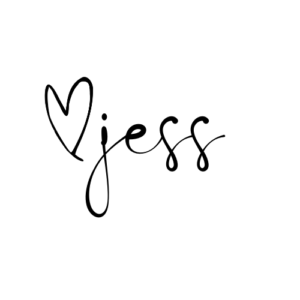Ugh. That’s how I feel when it comes to looking at my spending habits. I am notoriously impulsive and live-in-the-moment which does not equate to sustainability in the least. It’s something I can honestly say I “suck” at, friends. That’s why I wanted to start my focus on sustainability with spending. To me, an attitude of sustainability means that you’re both living in the moment and looking towards the future — always considering how the choices you make will impact you, those around you, and the planet.

Spending frivolously is not sustainable for me and it certainly isn’t helping the planet, either. I’ve broken this down to a few main focus areas for myself and hope that you’re able to gain something from my own mistakes or maybe decide to walk this road alongside me!

A Focus on Sustainability With Spending -Budgeting:
It’s kind of hard to identify what “step one” of any major life change should be, right? Actually, it’s more scary than hard — because it means that I have to admit that I *need* change, that *I* make mistakes, and that I *don’t* have all the answers (yikes, reality). Big change can be overwhelming to me and it makes me feel like I just can’t possibly accomplish what I want to accomplish. That’s why I figured keeping it “simple” would be the best place to start. Making small, simple changes over time is easier to maintain — which is so important. It doesn’t matter what you do if you don’t continue!
For me, keeping it simple means answering two questions:
- Where is my money?
- What am I doing with it?
Obviously, you can go down a rabbit hole, here, but the basics of budgeting begin by answering these questions. To help answer these questions, I find it’s necessary for me to have a way to compartmentalize and organize. I’m going to be using an app (I Googled “easiest budget app”) — there are so many budget apps out there and they can get pretty fancy (I suggest just going SIMPLE & FREE because it doesn’t matter how detailed your app/budget becomes if you aren’t able to actually utilize it).
Budgeting App List (to be cont’d):
I’ll be using the iSaveMoney app for starters and will continue to update how it’s working for us. The overall layout is easy to understand and makes is quick to input daily and set goals. I’ll be updating this post with suggestions I’ve received from others, as well!
- iSaveMoney
- Mint
- Zeta
- You Need A Budget
- Charlie

Okay this is where my impulsivity does me in every single time! It’s the instant gratification loving side of my brain that sees something and says SOLD! I’m also *very* good at justifying unnecessary purchases. The underlying point is to *think* before you buy. When you do, it’s easy to identify frivolous spending before it happens. There is little that I need to buy and a whole heck of a lot that I want. This is *not* sustainability! This is an attitude and a privilege problem. Learning to be satisfied with what I have is something that I need to work on – how about you?

A Focus on Sustainability With Spending -Goals & Rewards
This is my favorite part about budgeting, honestly. I love setting reasonable goals. It gives me something to look towards and a clear focus for reigning in those impulsive moments I talked about earlier. We have several big goals (think finishing the basement, adding an in ground pool, hunting land — these are YEARS long goals) but it’s important to make smaller goals, too. One of my small goals this year is to shop small and avoid big box stores. For example, I did not purchase anything from Target in January (yay!) and I’m setting aside ten bucks per month that I don’t buy new to put towards my nose piercing (it’s a long story — my nose was pierced, now it’s not, and I miss it). What are some of your goals/rewards?

A Focus on Sustainability With Spending – Where To Shop (to be cont’d)
One of the things that I’ve become passionate about is shopping small and shopping second hand when possible. I didn’t catch the thrifting bug until after I turned 30. I’ve always loved “old” things – but never realized how important shopping second hand is to the environment (and to the bank account). When we buy used – less goes into the landfills. It’s recycling at its best. When you do need to buy new, shopping small before heading online or into Target helps our local communities. I also love shopping handmade – supporting artisans with a focus on sustainability. In the spirit of this, I’ll start a list of some of my favorite ways to shop small, second hand, and handmade. I hope you’ll add suggestions in the comments!
- Etsy
- Mercari
- Swap Sites
- Market Place
- Online Auctions
- EBay
- Local Ma & Pop
- Garage Sales
- Flea Markets
- Stuff Etc.
- Goodwill
I’m looking forward to this journey. I want to do my part to be better and this is a great way to start. I want you to share your ideas, tips, and tricks, too! Let’s be better together, friends. Until next time —




